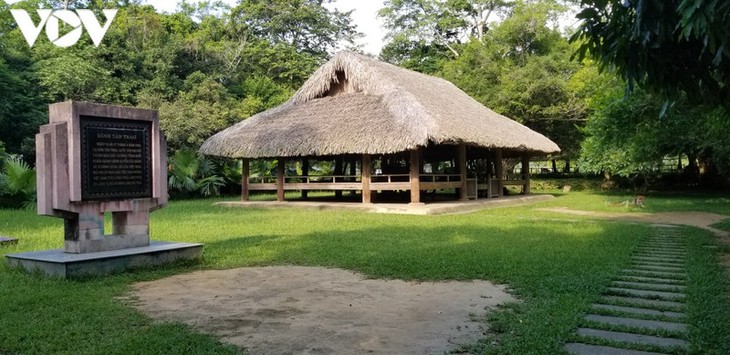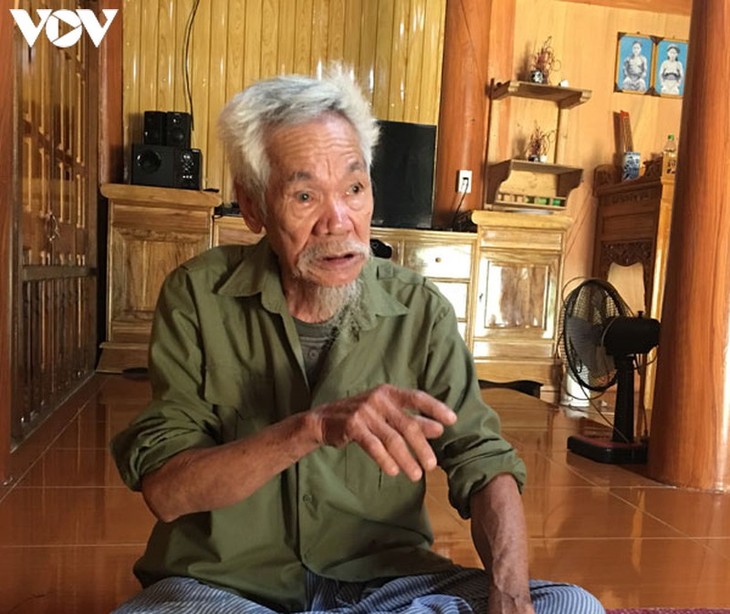(VOVWORLD) - In May, 1945, after moving from Cao Bang to Tuyen Quang province to direct the national revolution, President Ho Chi Minh chose Tan Trao commune to set up a revolutionary base for the whole country. From Tan Trao, the Central Party Committee and President Ho Chi Minh made important decisions to guide a general uprising to wrest back power from the French and Japanese in August, 1945.
 Tan Trao Communal House where the National People’s Congress was held on August 16, 1945. Tan Trao Communal House where the National People’s Congress was held on August 16, 1945. |
After Ho Chi Minh moved from Cao Bang to Tuyen Quang in May, 1945, he stayed for a time at Nguyen Tien Su’s house in Tan Trao commune, formerly called Kim Long. After a few days, he moved to a hut called Na Nua.
Hoang Ngoc, whose stilt house stands beside the historic banyan tree in Tan Trao, recalled, “At that time, 5 to 7 revolutionaries were staying in each villager’s house. They picked vegetables, collected firewood, carried water, and ate with their hosts. So did President Ho Chi Minh. He stayed in Tien Su's house and ate with the family. Ho Chi Minh took care of everyone from the elders to the children. Everyone believed in and supported Ho Chi Minh and the revolution.”
|
 Hoang Ngoc, a former member of the children team for national salvation, lives in Tan Lap commune, Son Duong district, Tuyen Quang province. Hoang Ngoc, a former member of the children team for national salvation, lives in Tan Lap commune, Son Duong district, Tuyen Quang province.
|
Ngoc was selected by Ho Chi Minh as one of the first members of a children team for national salvation, now called the Ho Chi Minh Vanguard Children’s Union, in Kim Long.
Located in a strategic military position, surrounded by forests and mountains, the Tan Trao Communal House was chosen as a venue for organizing on August 16, 1945, the National People’s Congress, a forerunner of Vietnam’s National Assembly.
Ngoc said the commune was boiling with revolutionary spirit and a strong belief in the success of the struggle for national liberation.
“We supported the congress by donating chickens, rice, and even a cow. I will never forget what Ho Chi Minh said when he came to the commune to thank us for our support when he saw skinny children in rags, he asked the congress members to do everything possible to ensure that those Vietnamese children had food to eat, had clothes to wear, and could attend school,” said Ngoc.
He recalled the pre-general uprising days while sitting under Tan Trao’s historic banyan tree, “That afternoon, in the shadow of the ancient banyan tree, after singing ‘the Marching song’ General Vo Nguyen Giap read Military Order 1 launching the General Uprising. After that, the troop departed for Thai Nguyen.”
75 years later, Tan Lap, a poor commune. has now become a cultural village with 200 households living in spacious stilt houses.